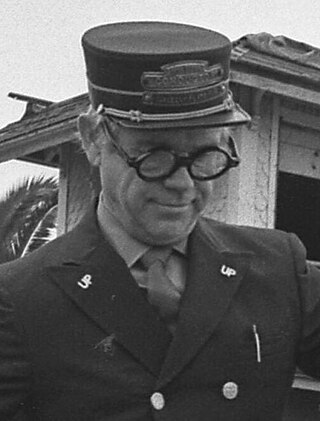
Ward Walrath Kimball was an American animator employed by Walt Disney Animation Studios. He was part of Walt Disney's main team of animators, known collectively as Disney's Nine Old Men. His films have been honored with two Academy Awards for Best Animated Short Film.

Futurama is an American animated science fiction sitcom created by Matt Groening for the Fox Broadcasting Company and later revived by Comedy Central, and then Hulu. The series follows Philip J. Fry, who is cryogenically preserved for 1,000 years and revived on December 31, 2999. Fry finds work at the interplanetary delivery company Planet Express, working alongside the one-eyed mutant Leela and the robot Bender. The series was envisioned by Groening in the mid-1990s while working on The Simpsons; he brought David X. Cohen aboard to develop storylines and characters to pitch the show to Fox.

Treasure Planet is a 2002 American animated science fiction adventure film produced by Walt Disney Feature Animation and released by Walt Disney Pictures. It is a science fiction adaptation of Robert Louis Stevenson's adventure novel Treasure Island (1883), and it is the third retelling of the story in an outer space setting, following the Bulgarian film Treasure Planet (1982) and the Italian miniseries Treasure Island in Outer Space (1987). It is the third Disney adaptation of the novel, following Treasure Island (1950) and Muppet Treasure Island (1996). In the film's setting, spaceships are powered by solar sails and resemble the 18th-century sailing vessels of the original Treasure Island.
The Animation Show is a touring festival of animated short films that was first held in fall 2003. It was sponsored by MTV, and was created by award-winning animators Mike Judge and Don Hertzfeldt.
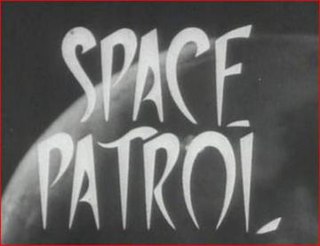
Space Patrol is a British science fiction television series featuring marionettes that was produced in 1962 and broadcast from the beginning of April 1963. It was written and produced by Roberta Leigh in association with ABC Weekend TV.

Mission to Mars is a 2000 American science fiction adventure film directed by Brian De Palma, written by Jim Thomas, John Thomas, and Graham Yost, and suggested by Disney's theme park attraction of the same name. The film depicts the first crewed Mars exploration mission going awry; American astronaut Jim McConnell helps to coordinate a rescue mission for a colleague. Principal support actors were Tim Robbins, Don Cheadle, Connie Nielsen, Jerry O'Connell, and Kim Delaney.

Fun and Fancy Free is a 1947 American animated musical fantasy anthology film produced by Walt Disney and Ben Sharpsteen and released on September 27, 1947 by RKO Radio Pictures. The film is a compilation of two stories: Bongo, narrated by Dinah Shore and loosely based on the short story "Little Bear Bongo" by Sinclair Lewis; and Mickey and the Beanstalk, narrated by Edgar Bergen and based on the "Jack and the Beanstalk" fairy tale. Though the film is primarily animated, it also uses live-action segments starring Edgar Bergen to join its two stories.
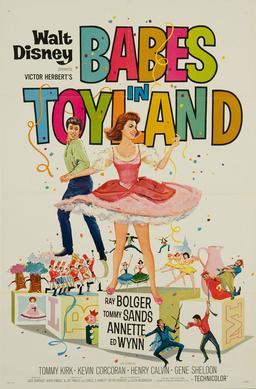
Babes in Toyland is a 1961 American Christmas musical film directed by Jack Donohue and produced by Walt Disney Productions. It stars Ray Bolger as Barnaby, Tommy Sands as Tom Piper, Annette Funicello as Mary Contrary, and Ed Wynn as the Toymaker.

Sleeping Beauty is a 1959 American animated musical fantasy film produced by Walt Disney Productions and released by Buena Vista Film Distribution. Based on Charles Perrault's 1697 fairy tale, the film follows Princess Aurora, who was cursed by the evil fairy Maleficent to die from pricking her finger on the spindle of a spinning wheel on her 16th birthday. She is saved by three good fairies, who alter Aurora's curse so that she falls into a deep sleep and will be awakened by true love's kiss. The production was supervised by Clyde Geronimi, and was directed by Wolfgang Reitherman, Eric Larson, and Les Clark. It features the voices of Mary Costa, Bill Shirley, Eleanor Audley, Verna Felton, Barbara Luddy, Barbara Jo Allen, Taylor Holmes, and Bill Thompson.
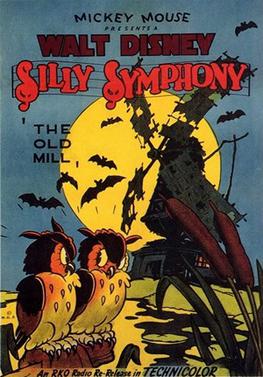
The Old Mill is a Silly Symphonies cartoon produced by Walt Disney Productions, directed by Wilfred Jackson, scored by Leigh Harline, and released theatrically to theatres by RKO Radio Pictures on November 5, 1937. The film depicts the natural community of animals populating an old abandoned windmill in the country, and how they deal with a severe summer thunderstorm that nearly destroys their habitat. It incorporates the song "One Day When We Were Young" from Johann Strauss II's operetta The Gypsy Baron.

Clerks is an American adult animated sitcom created by Kevin Smith for ABC. Based on Smith's 1994 comedy film of the same name, it was developed for television by Smith, Smith's producing partner Scott Mosier and former Seinfeld writer David Mandel with character designs by Stephen Silver, known for character designs in Disney Channel's Kim Possible and Nickelodeon's Danny Phantom. It is the first television show to be set in Smith's View Askewniverse. It is Disney’s second adult animated television series after The PJs.
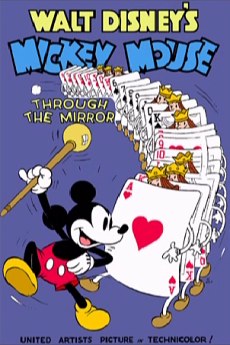
Thru the Mirror is a 1936 American animated short film directed by David Hand from a story by William Cottrell and Joe Grant. In this cartoon short, Mickey Mouse has a Through the Looking-Glass-parody-like dream that he travels through his mirror and enters a topsy-turvy world where everything is alive. While there, he engages in a Fred Astaire dance number with a pair of gloves and a pack of cards, until the cards chase him out of the bizarre world. Produced by Walt Disney Productions and released by United Artists, it was the 83rd Mickey Mouse short film to be released, the fourth of that year.
"Man in Space" is an episode of the American television series Disneyland which originally aired March 9, 1955 on ABC. It was directed by Disney animator Ward Kimball. This Disneyland episode, was narrated partly by Kimball and also by such scientists Willy Ley, Heinz Haber, and Wernher von Braun, as well as Dick Tufeld of Lost in Space fame.
"Man and the Moon" is an episode of Disneyland, which originally aired on December 28, 1955. It was directed by Disney animator Ward Kimball.

Roving Mars is a 2006 American IMAX documentary film about the development, launch, and operation of the Mars Exploration Rovers, Spirit and Opportunity. The film uses few actual photographs from Mars, opting to use computer generated animation based on the photographs and data from the rovers and other Mars probes. The film has been released on Blu-ray disc by distributor Disney.
The third wave of Walt Disney Treasures was released on May 18, 2004. It was originally planned to be released in December 2003, but was delayed for almost half a year in order to meet an increased demand with a higher number of tins produced. This wave was the first to have a certificate of authenticity with the individual number of the tin on it, replacing the number embossed on the tin. This was the final wave released with side straps.

Mars Needs Moms is a 2011 American animated science fiction comedy film co-written and directed by Simon Wells, produced by ImageMovers Digital and released by Walt Disney Pictures. Based on the Berkeley Breathed book of the same title, the film was animated through the process of performance capture and stars Seth Green, Dan Fogler, Elisabeth Harnois, Mindy Sterling, and Joan Cusack. It was the second and final film produced by ImageMovers Digital before the studio was shut down and re-absorbed into ImageMovers resulting in the company leaving the animation business for good. It tells the story of a nine-year-old boy named Milo who sets out to save his mother on Mars after she is abducted by Martians.
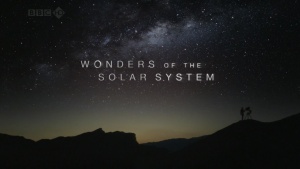
Wonders of the Solar System is a 2010 television series co-produced by the BBC and Science Channel, and hosted by physicist Brian Cox. Wonders of the Solar System was first broadcast in the United Kingdom on BBC Two on 7 March 2010. The series comprises five episodes, each of which focuses on an aspect of the Solar System and features a 'wonder' relevant to the theme. The series was described as one of the most successful to appear on BBC Two in recent years. An accompanying book with the same name was also published.
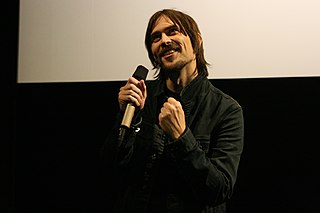
Don Hertzfeldt is an American animator, writer, and independent filmmaker. He is a two-time Academy Award nominee who is best known for the animated films It's Such a Beautiful Day, the World of Tomorrow series, ME, and Rejected. In 2014, his work appeared on The Simpsons. Eight of his short films have competed at the Sundance Film Festival, a festival record. He is also the only filmmaker to have won the Sundance Film Festival's Grand Jury Prize for Short Film twice.
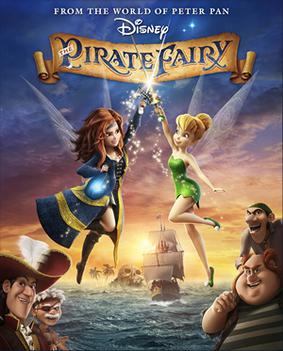
The Pirate Fairy is a 2014 American animated fantasy film directed by Peggy Holmes. It is the fifth direct-to-video feature-length animated film in the Disneytoon Studios' Tinker Bell film series and the Disney Fairies franchise, based on the character Tinker Bell from J. M. Barrie's Peter and Wendy. The film features the voices of Mae Whitman, reprising her role of Tinker Bell, Christina Hendricks as a dust-keeper fairy named Zarina, and Tom Hiddleston as James.
















